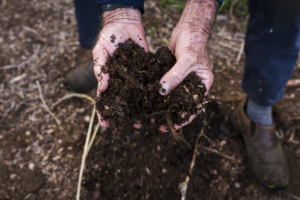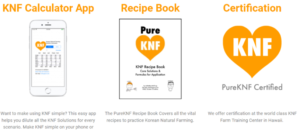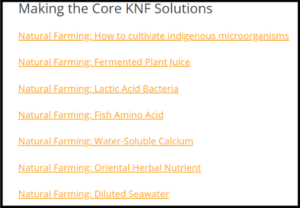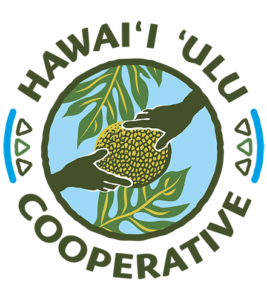Intro to Korean Natural Farming (KNF) in Hawaiʻi

Growing food crops sustainably can be a challenge for Hawaiʻi farmers both economically and in practical terms. Natural farming methods provide one solution to combat the rising costs of imported farm inputs that have been worsened by supply chain bottlenecks, while helping to restore and maintain the long-term health and productivity of Hawaiʻi farmland. Many natural farming practices find their roots in traditional agriculture techniques in various cultures and places throughout the world. In this guide, we present an introduction to one popular form of Natural Farming in Hawaiʻi – Korean Natural Farming, or KNF, and provide several resources for further information that Hawaiʻi farmers can utilize to better understand and employ natural farming practices on their farms.
The Basics – What is KNF?
Korean Natural Farming (KNF) focuses on cultivating “indigenous microorganisms” to improve the health and productivity of soil and crops – utilizing as many on-site resources as possible while excluding chemical fertilizers, pesticides, and herbicides.
KNF methods can be used in conjunction with other practices or utilized as a complete, stand-alone management system; this philosophy is mostly focused on a “use what you have/is locally available to you” approach. Employing KNF as a form of natural farming on your land can reduce costs, improve long-term soil health, and increase crop productivity; the efficacy of KNF was demonstrated in this study at CTAHR. The study found that the higher yields and reduced soil compaction corresponded to slower initial sprouting growth, suggesting that while KNF-treated plants have slower initial growth rates, they become substantially healthier and more productive than their non-KNF counterparts after theyʻve become well established. The study also determined that while KNF did not necessarily increase the quality of the fruit being produced, the KNF-treated plants did produce larger fruits over a longer period of time and demonstrated greater resistance to disease than other conventional and organic methods.
KNF is one of many different Natural Farming practices out there, and it is not necessarily the right fit for everyone. The applications and solutions involved in KNF require a significant investment of time, labor, and patience, and some folks can become discouraged by the long-term nature of the approach. For a growing group of farmers in Hawaiʻi, however, this holistic approach to farming has been worth the extra work!
KNF practices represent one part of the larger spectrum of the natural farming community, so you can look forward to future resource guides on other practices in the future! See a list of local resources below to better understand KNF practices – along with the instructions to create the core solutions and purchase locally crafted reference materials.
KNF Education – Local Resources
KNF utilizes natural inputs found on your farm or local area to generate healthy microbial populations to ensure the availability of all the “food” that your crops need to thrive. Below are some local resources which provide educational support and practical examples of KNF methodologies and applications.
Natural Farming Hawaiʻi – “A Living Example of Pure KNF”
Visit this locally developed website for growers interested in all aspects of natural farming, including KNF practices described in detail.

- Beginners Guide to KNF – Read this informative guide to KNF practices developed by Master Cho and refined for local farmers by Dr. Drake Weinart; includes detailed explanations of how to make and use the various core solutions.
- Purchase the KNF Solution Recipe Book – Purchase a hard copy or E-book of KNF Recipes for your farm.
- Register for Local KNF Certification Courses – Register for the next in-person local KNF certification course here
- Natural Farming Hawaii: KNF Applications Guide See this page for detailed information on making the 9 Core KNF Solutions, supported by several local resources

Other Helpful Resources
- Chris Trump: Natural Farming – Hawaiʻi Island farmer Chris Trump has developed an online education course and free YouTube Series on how to prepare and use the various KNF solutions.

- CTAHR Resources on KNF – Check out this UH CTAHR page with various resources on understanding the preparation and use of the core solutions used in KNF.
- Effect of EM on Soil Quality, Fruit Quality and Yield of Orange Trees in a Brazilian Citrus Orchard – Read this paper on the effect of Effective Microorganisms on Orchard Citrus Crops; from the College of Agriculture at the University of Sao Paolo
